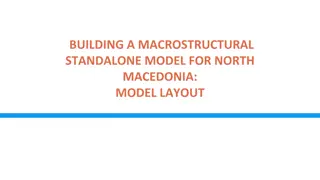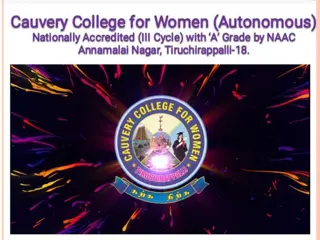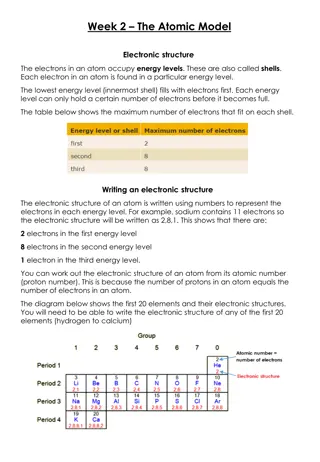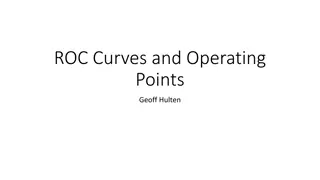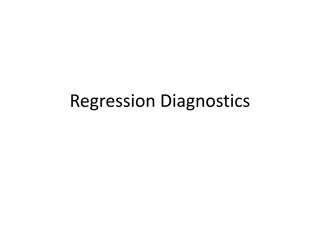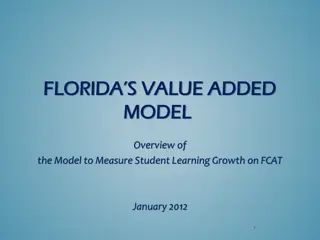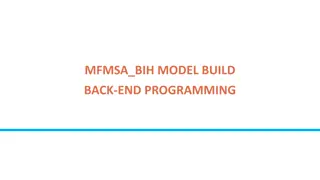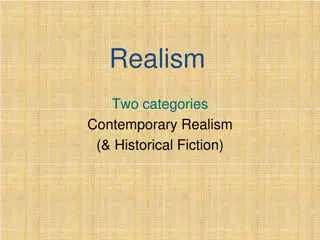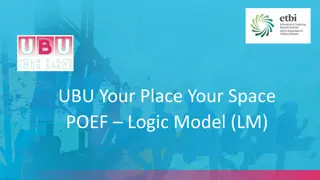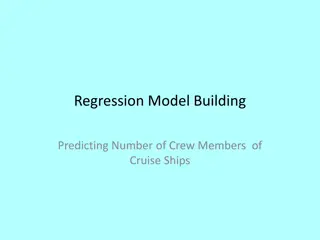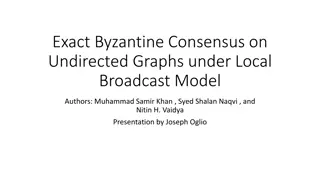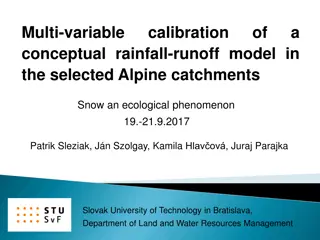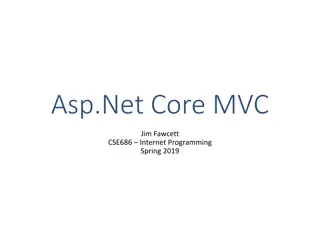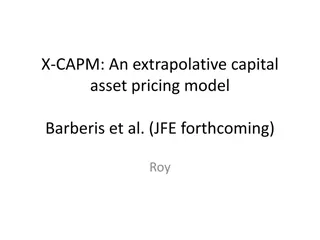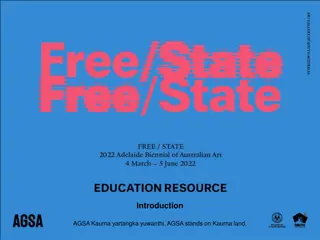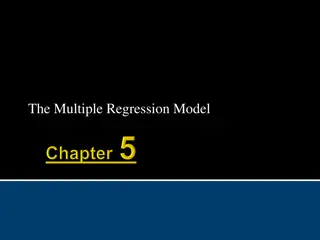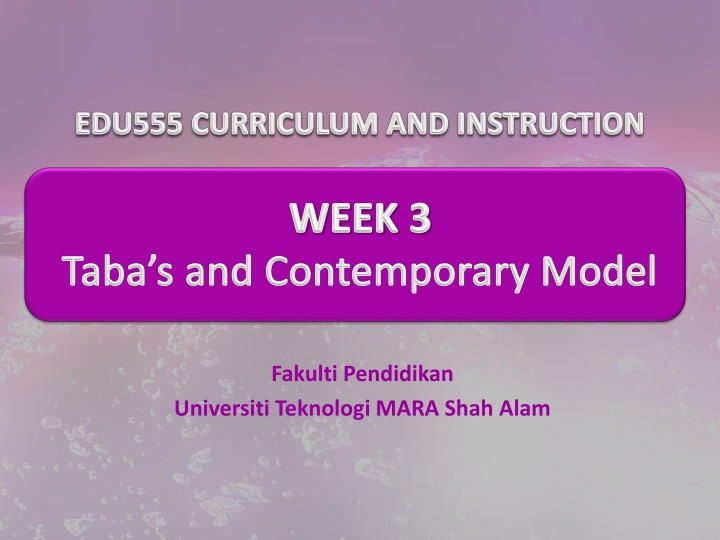
Taba's Model for Curriculum Development
Explore Hilda Taba's innovative approach to curriculum development, known as the grass-roots model. Discover the key principles, such as involving teachers in the process and starting with specific needs analysis. Compare Taba's Model with Tyler's Model and learn about the importance of steps like diagnosing needs, setting objectives, selecting content, and organizing learning experiences.
Download Presentation

Please find below an Image/Link to download the presentation.
The content on the website is provided AS IS for your information and personal use only. It may not be sold, licensed, or shared on other websites without obtaining consent from the author. If you encounter any issues during the download, it is possible that the publisher has removed the file from their server.
You are allowed to download the files provided on this website for personal or commercial use, subject to the condition that they are used lawfully. All files are the property of their respective owners.
The content on the website is provided AS IS for your information and personal use only. It may not be sold, licensed, or shared on other websites without obtaining consent from the author.
E N D
Presentation Transcript
Fakulti Pendidikan Universiti Teknologi MARA Shah Alam
This lecture will consist of the following: 1. Taba s Model 2. Contemporary Model / Framework of Curriculum Development
Based on the Objective Model or Tyler s Model (Ralph Tyler, 1950) Taba s Model Most suitable model for language program Prominent model for curriculum development and widely used as a reference (Hilda Taba, 1962)
Hilda Taba (7 December 1902 6 July 1967) was an architect, a curriculum theorist, a curriculum reformer, and a teacher educator. Taba was born in a small village in southeastern Estonia. Taba was introduced to Progressive education ideas at Tartu University by her philosophy professors. Taba was a student of John Dewey. She wrote a book entitled Curriculum Development: Theory and Practice (1962).
Also known as Grass-roots approach. Based on the rationale that those who teach the curriculum i.e. the teacher, should participate in developing the curriculum. Teacher should have major input in curriculum development. Agreed with Tyler that there should be a definite order in developing the curriculum to facilitate attaining a more thoughtful and dynamically conceived curriculum.
Steps or stages in curriculum development are almost similar to Tyler s Model. The main difference is in the need to carry out a diagnosis of needs in Taba s Model. Inductive approach start with specifics to a general design. i.e. teachers start by creating teaching learning units for the students, rather than by engaging initially in creating a general curriculum design.
DIAGNOSIS OF NEEDS SELECTION OF OBJECTIVES SELECTION OF CONTENT ORGANIZATION OF CONTENT SELECTION OF LEARNING EXPERIENCES ORGANIZATION OF LEARNING EXPERIENCES DETERMINING OF WHAT TO EVALUATE AND HOW TO EVALUATE IT
7 major steps: 1. Diagnosis of Needs: Begin by identifying the needs of the students for whom the curriculum is planned. 2. Formulation of Objectives: Specify objectives to be accomplished. 3. Selection of Content: Match content and objectives. 4. Organisation of Content: Organise content in a sequence, taking into account the maturity of the learners, their academic achievement and their interests.
5. Selection of Learning Experiences: Teacher selects learning experiences and methods that will involve the students with the content. 6. Organisation of Learning Experiences: Sequence and organise learning activities. 7. Evaluation and Means of Evaluation: Determine how objectives are to be accomplished and what have been accomplished.
Taba believed that: "To evolve curriculum development and a method of thinking about it, one needs to ask what demands and requirements of culture and society both are, both for the present and the future. Curriculum is preparing young participate in our culture." a theory of a way people of to
Gives teachers a greater role by not just making them implementers of the curriculum but also developers. Teacher approach is used. Note that teachers are aware of the students needs therefore they are the ones that should develop the curriculum. Gives importance to objectives in order to establish a sense of purpose for deciding what to include, exclude and emphasize in a curriculum.
It gives power to the learners: they are identified as the experts in knowing what they need to know.
It often relies on the teacher's ability to create or select materials appropriate expressed needs. This requires skill on the part of the teacher, as well as time and resources. Given the reality of teachers' professional preparation and working conditions (Smith et al., 2001), lack of skills, time and resources makes creating curriculum with this approach difficult. to learners'
Teachers may also find it difficult to strike an acceptable balance among the needs and interests of students. Taba s inductive model may not appeal to curriculum developers who prefer to consider the more global aspects of the curriculum before proceeding to specifics.
Based on 3 models of curriculum development, the contemporary model or framework of curriculum development involves 5 steps: 1) Needs analysis 2) Formulating Objectives 3) Selecting and organizing content 4) Implementing the curriculum 5) Evaluating the curriculum
Selecting and Organizing Content Implementing the Curriculum Needs Analysis Formulating Objectives Evaluating the Curriculum
1) Needs analysis It may include analyzing the needs of: Students Graduates Employers Industry Stakeholders National and global development
2) Formulation of objectives Formulate objectives in relation to established philosophy, vision, mission, goals and objectives of the institution / organization / body
3) Selection of Content Sources of content: Lecturers External examiners Employers Accreditation bodies IHLs / Academicians Students Academic advisors Professional bodies Alumni, graduates Government policies Comparison and benchmarking with international / national / organisations best practices
3) Selection of Content Consider: Breadth and depth Relevance and Adequacy Balance between knowledge, skills and attitude
4) Implementation Teaching and learning process
5) Evaluation Determine the method to measure whether the curriculum is achieving the desired objectives or results It involves an appraisal of the students actual behaviour It should be carried out at several different times to secure evidence of the permanence of the learning achieved
5) Evaluation Using a variety of methods e.g. tests, work samples, questionnaires, records, etc. Results should be used to: indicate strengths and weaknesses of the program to plan for revision

